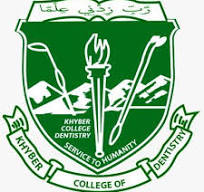RESTORATIVE TREATMENTSTATUS AMONG SELF REPORTEDBRUXISMPATIENTS: A CROSS-SECTIONALSTUDY
DOI:
https://doi.org/10.33279/jkcd.v8i01.383Keywords:
Restorative status, self-reported, bruxismAbstract
Objective:To determine the proportion and association of the restorative treatment status among self-reported bruxism patients.
Materials and Method:It was a retrospective cross-sectional study performed at the private dental practices through convenience sampling. The recorded 37 cases were identified satisfactorily to be included in the study.Patients with known developmental disability neurological or gross malocclusion such as open bite, cross bite or skeletal class 2 and class 3 malocclusion and patients
with a missing required list of clinical records were not included in the study.Patient’s record was assessed to find the restorative work performed in term of filling, crown and bridge work and the presence or absence of removable prosthodontics appliances for the missing teeth. Statistical analysis was performed using SPSS 18. Chi-squared test was used to find significance (p= 0.05).
Results:Out of 37 patients, 13 were having no restorative work done while 12 patients were having minor restorative treatment, i.e. filling in 1 or 2 teeth or crowning on 1 or 2 teeth. The remaining 12 patients were having major restorative work is done which included more than two dental fillings or the presence of FPD or RPD.
Conclusion: Restorative work has a significant effect on a patient occlusion status and TMJ function.
Downloads
Published
How to Cite
Issue
Section
License
Copyright (c) 2018 Sajid Ali, Mohammad Haroon, Mohammad Irfan

This work is licensed under a Creative Commons Attribution-NonCommercial-NoDerivatives 4.0 International License.
You are free to:
- Share — copy and redistribute the material in any medium or format
- Adapt — remix, transform, and build upon the material
- The licensor cannot revoke these freedoms as long as you follow the license terms.
Under the following terms:
- Attribution — You must give appropriate credit , provide a link to the license, and indicate if changes were made . You may do so in any reasonable manner, but not in any way that suggests the licensor endorses you or your use.
- NonCommercial — You may not use the material for commercial purposes .
- No additional restrictions — You may not apply legal terms or technological measures that legally restrict others from doing anything the license permits.









